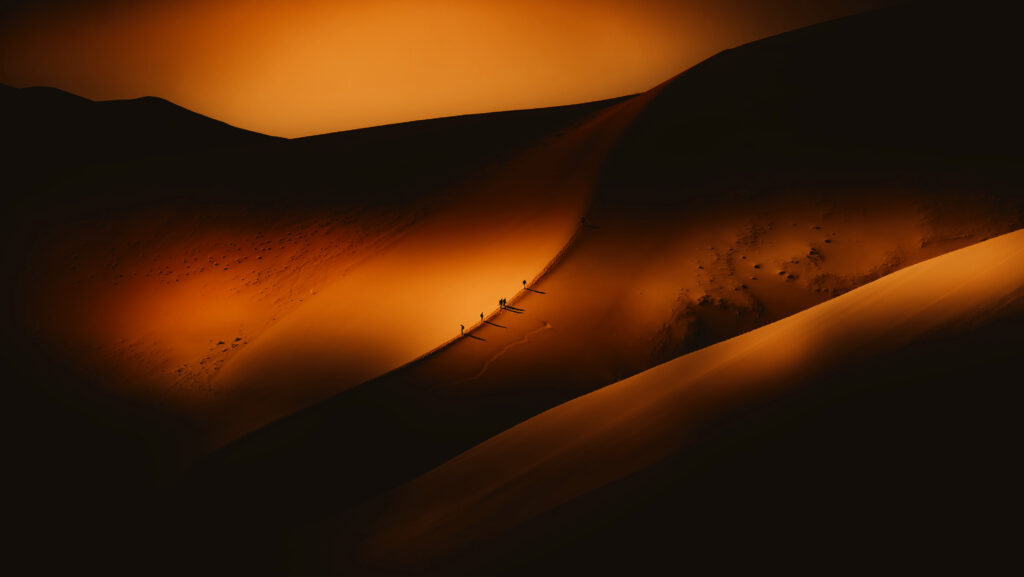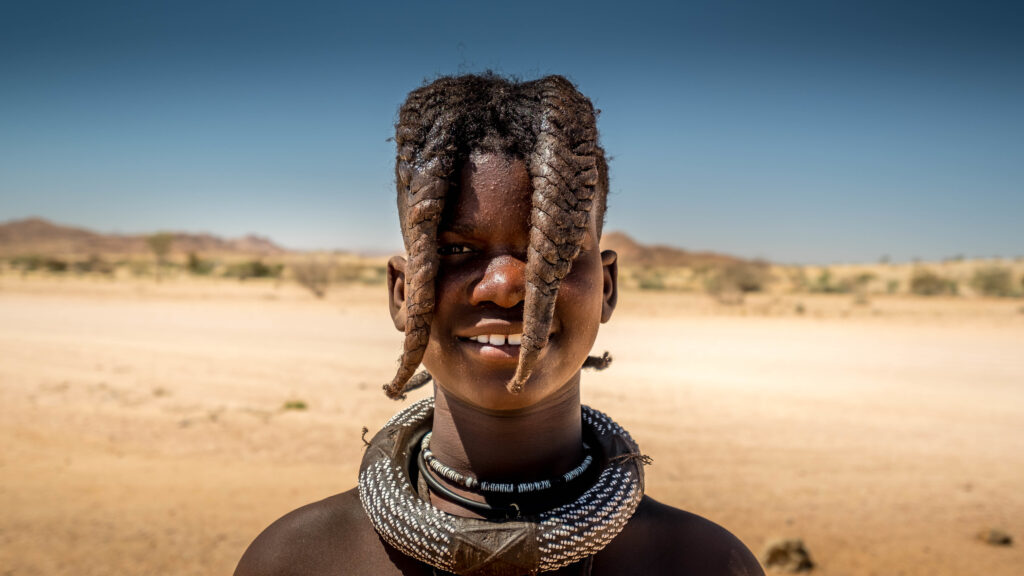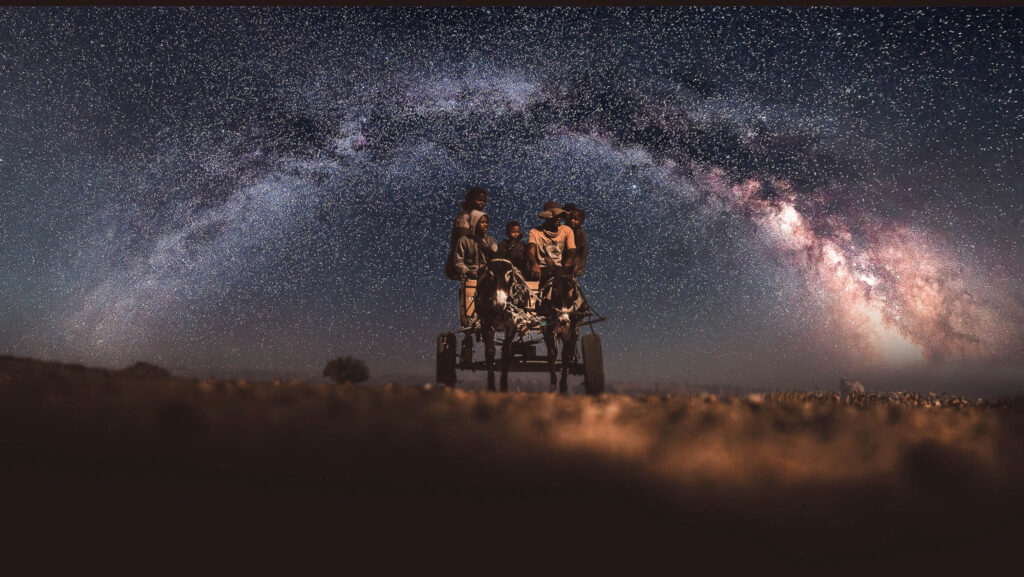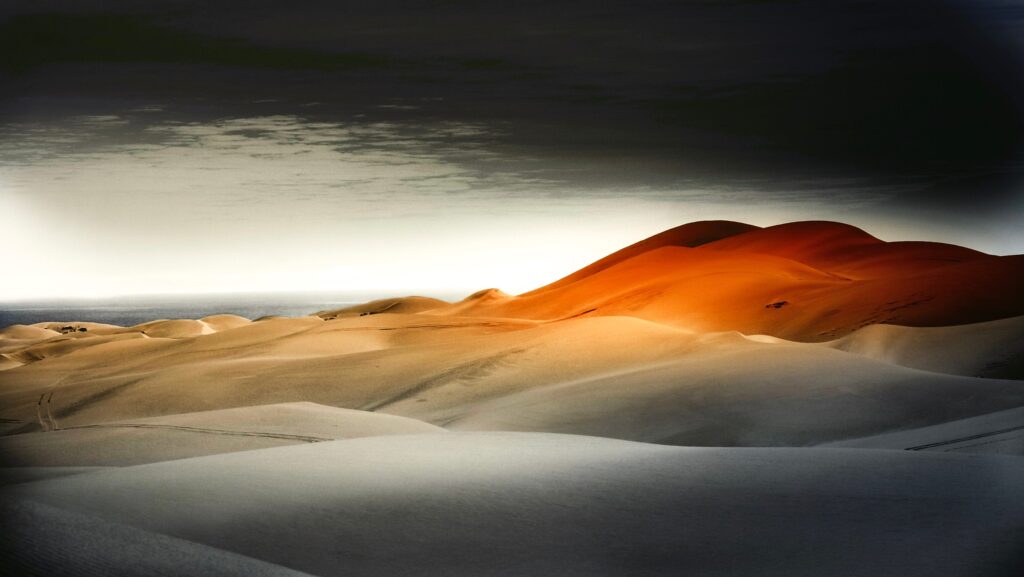Namibia, a land of fascinating cultural diversity and breathtaking landscapes, is home to not one but two UNESCO World Heritage Sites that are as remarkable as they are ancient. These sites preserve some of the world’s most precious natural and cultural treasures, making Namibia an irresistible destination for travelers with a love for history, nature, and adventure.
From the awe-inspiring red dunes of Sossusvlei in the Namib Desert to the intricate rock engravings of Twyfelfontein, Namibia’s World Heritage Sites offer an experience like no other. Grab your binoculars, pack your sense of wonder, and get ready to explore the incredible treasures of Namibia!
TWYFELFONTEIN: A WINDOW INTO ANCIENT HISTORY
Twyfelfontein (officially known as ǀUi-ǁAis) isn’t just another historical site—it’s a UNESCO World Heritage Site that takes you back thousands of years. Set against the dramatic backdrop of Damaraland, Twyfelfontein showcases one of Africa’s largest collections of prehistoric rock engravings, giving visitors a rare glimpse into ancient human life.
These sandstone etchings, depicting animals, human figures, and abstract designs, are thought to be between 2,000 and 6,000 years old. Twyfelfontein’s engravings represent a significant chapter in human history, earning it a spot on the prestigious UNESCO list for its cultural significance and timeless beauty.
Rock Art and Engravings: A Glimpse into the Past
Exploring the over 2,000 rock paintings and engravings at Twyfelfontein is like stepping into a time machine. These ancient artworks, created by early hunter-gatherer communities, depict giraffes, antelopes, birds, and people, among other symbols. Their intricate designs offer insight into the spiritual beliefs and daily lives of these early inhabitants, providing visitors with an opportunity to interpret these scenes and appreciate the artistic mastery of Namibia’s first artists.
Geological Wonders of Twyfelfontein
Beyond the stunning rock art, Twyfelfontein also boasts fascinating geological features. The Organ Pipes, towering basalt columns resembling giant stone organs, are a natural wonder that will leave you in awe. Nearby, the Burnt Mountain, with its dark, fire-like hues, adds another layer of mystique to the region. These formations are not just striking visual spectacles but also key ecological habitats for local flora and fauna.
NAMIB SAND SEA: A DESERT WILDERNESS LIKE NO OTHER

Namibia is known for its vast, otherworldly deserts, and the Namib Sand Sea stands out as one of the most extraordinary. Recognized as a World Heritage Site, this seemingly barren expanse of sand dunes hides a rich ecosystem that has adapted to one of the harshest environments on Earth. The Namib Sand Sea is the only coastal desert in the world where sand dunes meet the ocean, creating a surreal landscape of endless, fiery-red dunes stretching into the horizon.
Diverse Ecosystems in the Namib Desert
Despite its arid appearance, the Namib Desert is teeming with life. The ecosystem here is unique, with species such as the desert-adapted elephants, lions, and oryx, as well as the ancient Welwitschia plant, which can survive for over 2,000 years. This desert’s remarkable biodiversity is a testament to nature’s resilience and evolution, making the Namib Sand Sea a crucial ecological site.
Breathtaking Landscapes of the Namib Sand Sea
Visiting the Sossusvlei dunes is a must when exploring the Namib Sand Sea. These towering red dunes, some reaching heights of over 300 meters, offer unforgettable vistas, especially at sunrise when the light creates a stunning play of shadows and colors. Don’t miss Deadvlei, where ancient, petrified trees stand starkly against the white clay pan, creating a haunting yet beautiful contrast to the vibrant red sands.
THE CULTURAL SIGNIFICANCE OF THE NAMIB DESERT
The Namib Desert is not just a dry expanse of land, but a place with a rich cultural history passed down from generation to generation by indigenous communities.
These communities possess traditional knowledge of the desert that’s been used to survive in this harsh, arid environment for centuries.
This area is also a cultural landscape that symbolizes the connection between the past and the present. You’ll find remnants of past civilizations, such as rock art, that reflect ancient traditions and beliefs. Its historical significance is what earned the desert its place on the list of Namibia’s two world heritage sites.
TOURISM AND LOCAL COMMUNITIES
Each World Heritage Site boasts unique wonders and treasures waiting to be explored.
The twofold impact of tourism on these sites is undeniable, and it poses both conservation and economic development challenges. Finding the right balance to ensure the sites’ sustainability while attracting tourists can be tricky, but it is critical to their survival.
Community-based tourism initiatives have been implemented to promote the locals’ welfare and ensure the sites’ conservation. These initiatives have yielded success stories, with the communities actively participating in tourism activities and benefiting from its economic opportunities. As a visitor, participating in these initiatives offers a unique chance to engage with the locals, experience their culture, and contribute to their well-being.
CONCLUSION

Namibia’s two World Heritage Sites, Twyfelfontein and the Namib Sand Sea, offer a remarkable blend of natural beauty, cultural history, and biodiversity. Twyfelfontein’s ancient rock engravings tell the story of early human life, while the Namib Sand Sea showcases nature’s ability to adapt and flourish in extreme conditions.
As you explore these treasures, you’ll gain a deeper appreciation for Namibia’s unique heritage and the importance of preserving these sites for future generations. Whether you’re marveling at prehistoric rock art or standing atop a colossal sand dune, Namibia’s World Heritage Sites are bound to leave you in awe.
Don’t just take our word for it, get in touch with us and come experience these sites for yourself.
Images by: Solly Levi



